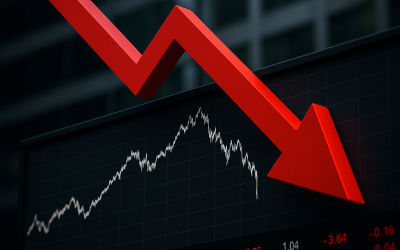China’s relentless expansion in global manufacturing is exposing the West’s deep-rooted supply chain dependencies, even as policy rhetoric about diversification grows louder. This article examines the real dynamics behind China’s manufacturing dominance, the West’s slow and often superficial response, and what strategic leaders must recognize if they want to move beyond empty slogans and actually reduce risk.
The Scale and Reality of China’s Manufacturing Dominance
For decades, China has systematically built the world’s most formidable manufacturing ecosystem. This isn’t just about cheap labor; it’s about scale, infrastructure, government coordination, and relentless investment in logistics and technology. The result: China now accounts for nearly 30% of global manufacturing output, dwarfing any single Western country and, in many sectors, outproducing entire regions.
Key factors behind this dominance include:
- Integrated Supply Chains: China’s industrial clusters—where suppliers, manufacturers, and logistics providers operate in close proximity—drive down costs and speed up innovation cycles.
- Infrastructure Investment: Massive state-led investments in ports, rail, energy, and digital infrastructure have made China the default hub for global production.
- Workforce Scale and Skill: A labor force that is both vast and increasingly skilled, with government support for technical training and automation adoption.
- Policy Consistency: Decades of industrial policy have prioritized manufacturing as a strategic national asset, not a short-term economic lever.
While Western leaders talk about “de-risking” and “friend-shoring,” the numbers tell a different story. Imports from China continue to rise in critical sectors like electronics, pharmaceuticals, and green tech. The COVID-19 pandemic and geopolitical tensions have only underscored—not diminished—this reliance.
Western Rhetoric vs. Supply Chain Reality
In boardrooms and parliaments across the West, the language of supply chain diversification is everywhere. But the gap between rhetoric and reality is wide, and growing. Here’s why:
- Superficial Diversification: Many companies have “China+1” strategies on paper, but in practice, shifting production to Vietnam, India, or Mexico often means assembling Chinese-made components elsewhere. The dependency remains—just less visible.
- Cost and Complexity: Moving supply chains is expensive, slow, and fraught with operational risk. Few Western firms are willing to absorb the cost or disruption required to truly localize or regionalize production.
- Policy Gaps: Western governments announce incentives and tariffs, but rarely match China’s scale of industrial policy, infrastructure investment, or long-term planning. The result: fragmented, reactive measures that don’t change the fundamentals.
- Talent and Technology Shortfalls: Years of offshoring have hollowed out domestic manufacturing capabilities, making rapid reshoring or diversification technically and logistically challenging.
What’s unsaid in most public discussions is that Western economies have built their prosperity on the back of globalized, China-centric supply chains. Unwinding this is not a matter of policy tweaks or PR campaigns—it’s a generational challenge that demands uncomfortable trade-offs.
Who Benefits, Who Pays: Winners and Losers in the Current System
Understanding the real incentives and consequences is critical for any strategic leader. The current system creates clear winners and losers:
- Winners:
- Multinational Corporations: Enjoy higher margins, faster innovation, and global reach by leveraging China’s manufacturing base.
- Chinese Industry and Workforce: Benefit from investment, technology transfer, and global market access.
- Consumers: Access to cheaper goods and rapid product cycles, especially in electronics, apparel, and consumer goods.
- Losers:
- Western Manufacturing Workers: Face job losses, wage stagnation, and declining industrial capacity.
- National Security Planners: Increasingly alarmed by dependence on Chinese suppliers for critical technologies and pharmaceuticals.
- Small and Medium Enterprises (SMEs): Struggle to compete with the scale and cost advantages of Chinese production.
What’s rarely discussed is the systemic risk: a single point of failure for key goods and technologies, and the strategic leverage this gives Beijing in times of crisis or conflict. The West’s dependence is not just economic—it’s geopolitical.
The Illusion of Quick Fixes: Why Diversification Is Harder Than It Looks
There’s a persistent myth that supply chain diversification is simply a matter of political will or corporate decision-making. The reality is far more complex:
- Industrial Ecosystems Can’t Be Replicated Overnight: China’s manufacturing clusters took decades to build. No amount of tax breaks or tariffs can instantly recreate the supplier networks, logistics, and skilled labor that underpin them.
- Alternative Hubs Have Limits: Countries like Vietnam, India, and Mexico are growing fast, but face bottlenecks in infrastructure, workforce, and regulatory consistency. Most are years—if not decades—away from matching China’s scale.
- Technology Transfer Is a Two-Edged Sword: Western firms that move production often bring their know-how with them, but risk losing IP and control in the process. Meanwhile, China continues to climb the value chain, moving from assembly to innovation.
- Supply Chains Are Sticky: Once established, supplier relationships, logistics contracts, and production processes are hard to unwind without major cost and risk.
Strategic leaders must recognize that real diversification requires more than moving factories—it demands rebuilding entire ecosystems, investing in workforce development, and making tough decisions about cost, speed, and resilience.
Signals That Matter: What to Watch for Beyond the Headlines
For those who want to move beyond the noise, here are the real signals that indicate whether Western supply chains are truly diversifying or just rebranding dependence:
- Capital Expenditure Trends: Are Western firms making sustained, large-scale investments in domestic or allied manufacturing capacity, or just hedging with token projects?
- Supplier Network Depth: Are new supply chains building local supplier ecosystems, or simply importing Chinese components for final assembly elsewhere?
- Workforce and Skills Development: Is there a measurable increase in technical training, apprenticeships, and manufacturing employment in Western economies?
- Policy Consistency and Scale: Are governments aligning industrial policy, infrastructure investment, and education with long-term manufacturing goals, or just reacting to headlines?
- Resilience Metrics: Are companies and countries tracking and reducing single points of failure, or just shifting risk from one geography to another?
Ignore the PR. Follow the money, the talent, and the infrastructure. That’s where real change—or the lack of it—will show up.
What Strategic Leaders Must Do Now
It’s time for strategic leaders—whether in government, industry, or finance—to move past rhetoric and take hard, measurable actions:
- Audit Real Exposure: Map supply chains down to the component and raw material level. Identify where dependencies are hidden, not just where final assembly occurs.
- Invest in Ecosystem Building: Support not just flagship factories, but the entire network of suppliers, logistics providers, and workforce development needed for true resilience.
- Align Incentives for the Long Term: Push for policy frameworks that reward sustained investment, not just short-term cost-cutting or headline-grabbing reshoring announcements.
- Embrace Transparency and Metrics: Demand clear reporting on supply chain risk, diversification progress, and resilience—not just financial performance.
- Prepare for Trade-Offs: Real diversification means higher costs, slower product cycles, and tough choices. Leaders must communicate these realities and build buy-in for the long haul.
The window for action is closing. Those who move now—deliberately, strategically, and with eyes wide open—will be better positioned for the next decade of global competition.
Conclusion
China’s manufacturing surge is not a temporary phenomenon—it’s a structural reality that exposes the West’s deep supply chain vulnerabilities. While policy rhetoric about diversification is loud, actual progress remains slow and superficial. Strategic leaders must cut through the noise, confront hard truths, and take real action if they want to build resilient, future-proof supply chains. Anything less is just wishful thinking.



0 Comments